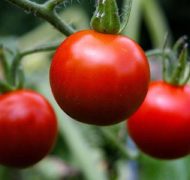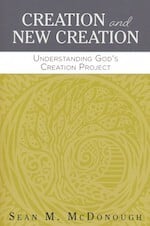Leave It Better Than You Found It
Blog / Produced by The High Calling
“We shall be known by the tracks we leave behind.” -Lakota Proverb
I love edible and medicinal wild plants. Every August as summer slowly winds into fall I look forward to the arrival of pawpaw season. Their scent, like a combination of apple cider and over-ripe bananas, guides me to these beautiful 3-5 inch long native-growing fruits. I peel back the skin and greedily suck the creamy vanilla custard pulp away from the seeds. If I’m lucky I can beat the coons to them.
I love to hunt for these gems not far from my house near a place called Shenk’s Ferry. This small reserve is a scientific puzzle. It has 69 species of native wildflowers, more than 63% of which have medicinal and edible uses and a number of which are listed as sensitive to human disturbance. It is perhaps the best place to see wildflowers in the mid-Atlantic region. All this despite having multiple reasons to not be so.
Shenk’s Ferry has been home to a charcoal plant, two railroads, an oil pipeline, two power line rights-of-way, and a dynamite factory that actually blew up, killing 13 people. But long before this, Shenk’s Ferry was a village site inhabited for almost 300 years beginning in 1300 A.D.
The fruits I’ve enjoyed on this 40-acre parcel of ground, like the improbable wildflowers there, represent the work of these villagers and the tracks they left behind.
The Anthropocene Effect
In the past century, the tracks of humankind have grown more strident, more global in scope, and more numerous. Gentle aphorisms such as “take only pictures and leave only footprints,” and the more imperative mantra, “leave no trace,” have been important for protecting places of exceptional biological richness. However, they fail to connect our purposeful work to the land around us.
From my perspective (easy to hold while savoring a delicious pawpaw), I reflect that we have somehow come to see humans and Nature as separate and separable. This deeply Western objectification is at the root of the desire to tame the wilderness and has led to callused destruction of much of Creation under the guise of work. Also under such “management,” the remaining “Natural” places have become like static dioramas in a museum.
Very unlike the dynamic garden where I find the pawpaws.
We tend to assume Nature is at its best when we do not participate but only objectively observe. We imagine our gentle footprints vanishing like tracks in the sand with the incoming tide and leaving Nature in some untouched, balanced state. Currently, however, our footprints extend even to places we have not been, like in the billions of plastic bits playing the role of “plankton lite” in oceanic food chains, and in our industrial breath that changes the atmosphere measurably at the planetary level. Such footprints will not soon vanish, so much so that some writers refer to the present geologic age as the Anthropocene, where the world is defined by the actions of humankind.
Tilling and Keeping
In my work at trying to restore eastern forests—to make them more like Shenk’s Ferry—I’ve tried to follow the trail mapped for Adam, whose name is literally “earth (soil) man” and was brought to life by the breath of God, the same breath that animated the animals (Genesis 2:7). He and Eve were called into the garden to till and to keep it; words best translated, “serve and protect” (Genesis 2:15). Calvin DeWitt called this relationship a “con-servancy,” where we work in service to the creation and it serves us out of its fruitfulness.
I’ve tried and continue to try because in God’s forests and gardens, the world works best—it is most fruitful for humans and fellow creatures—when we work correctly. This creation, which includes you and me, testifies to the very power and nature of the Creator (Romans 1:20). And my labors in it are to be invested for the good of others, as it is not mine (Matthew 25:14-30).
As I await the next pawpaw season, I’m thankful for the tracks left behind by the Shenk’s Ferry people, and I hope that my own will maintain the trail.
________________________________________________
Stewardship of Creation
The mission of Leave No Trace is to teach “people how to enjoy the outdoors responsibly.” It’s an ethics program based on protection and preservation. Biblical stewardship of the environment respects this high standard, then takes it a step further—adding propagation to the mix. We’re hardwired to create, so when God told us to work the earth and take care of it, he gave us permission to make beauty out of the basic; to turn raw ingredients into art, science, entertainment, and nourishment. How we do this matters greatly, and it starts with responsibility.
Our Stewardship of Creation series at The High Calling explores how daily decisions can leave the world better than we found it. We hope you’ll join us for the conversation.
Image by Ben Mcleod. Used with permission. Sourced via Flickr.





